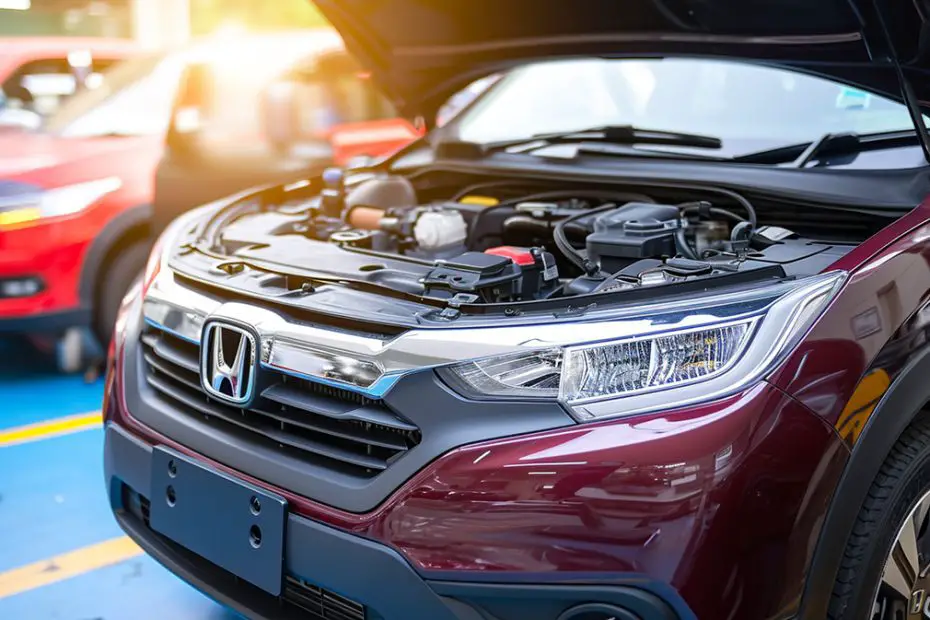Experiencing a car that shakes when stopped at a light can be unsettling. We’ve all been there, enjoying the smooth drive when suddenly, at a red light, our car starts to feel like it’s got a mind of its own. It’s not just annoying; it could be a sign that something’s amiss.
Thankfully, we’re here to dive into the common causes of idle vibration and how to address them. Whether it’s a minor issue or a warning sign of a bigger problem, we’ll help you get to the bottom of it.
Armed with the right information, we can tackle these shakes and rattles head-on. Let’s explore the potential culprits and find the solutions that’ll bring back that seamless driving experience we all love.
Common Causes of Idle Vibration
When our car shakes at a stoplight, it’s not just an annoyance‚Äîit’s our vehicle speaking to us about an underlying issue. Understanding the common causes of idle vibration is crucial to diagnosing the problem.
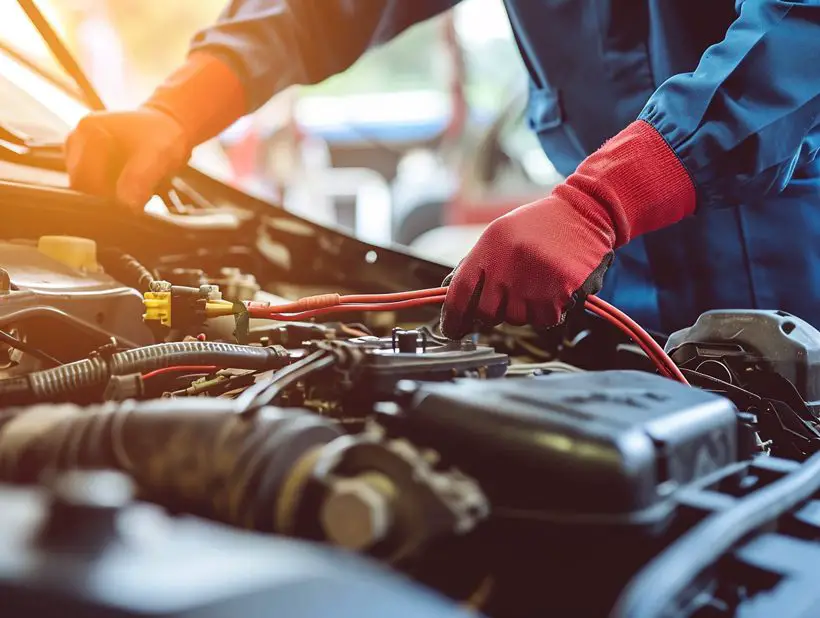
Faulty Engine Mounts
The engine mounts, rubberized brackets that hold the engine in place, can wear out or break over time. Faulty engine mounts can’t support the engine properly, which leads to noticeable vibrations.
- Signs include increased vibration when accelerating or a clunking noise when starting.
Spark Plug Issues
Spark plugs play a pivotal role in the engine’s combustion process. If they are dirty or worn out, the engine may misfire, causing it to shake.
- Symptoms include trouble starting the car and a decrease in fuel economy.
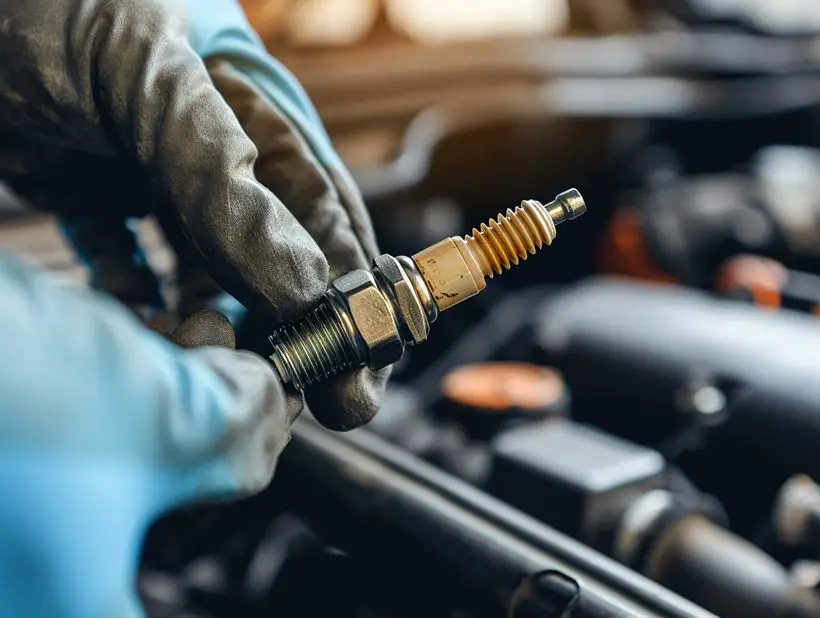
Dirty Fuel Injectors
Fuel injectors that are clogged with debris won’t deliver the proper spray of fuel, leading to uneven engine idling and vibration.
- Indicator: The engine may shake during idle but smooth out while driving at higher speeds.
Vacuum Leaks
The engine’s vacuum system helps regulate the flow of air and fuel. Any leaks can disrupt this balance, resulting in rough idling and shaking.
- Check hoses and connections for signs of cracks or wear.
| Common Causes | Symptoms | Indicator |
|---|---|---|
| Engine Mounts | Increased vibration | Visibly worn mounts |
| Spark Plugs | Trouble starting | Poor performance |
| Fuel Injectors | Rough idling | Engine smooths out at speed |
| Vacuum Leaks | Disrupted idle | Cracks in hoses |
By addressing these issues, we’re on our way to a smoother ride and a more reliable vehicle. Each problem has a potential solution, ranging from simple maintenance to component replacement. Let’s continue to explore how to tackle each one effectively, ensuring our journey toward a shake-free stoplight idle progresses with confidence.
1. Engine Misfire
When we’re discussing idle vibration, it’s crucial to explore the issue of engine misfires. An engine misfire happens when one or more of the cylinders fails to ignite properly. This can lead to a rough idle, a decrease in power, and an unsteady engine rhythm that you’ll likely feel when you’re stopped at a light.
Here’s what typically causes an engine misfire:
- Worn or Faulty Spark Plugs: Over time, spark plugs can become worn or damaged, which leads to inconsistent ignition.
- Ignition Coil Issues: If an ignition coil isn’t functioning, the spark plug won’t ignite, resulting in a misfire.
- Clogged Fuel Injectors: Fuel injectors that are clogged prevent the proper amount of fuel from entering the cylinder.
- Poor Compression: If there’s a leak in the cylinder, compression can be lost, preventing proper ignition.
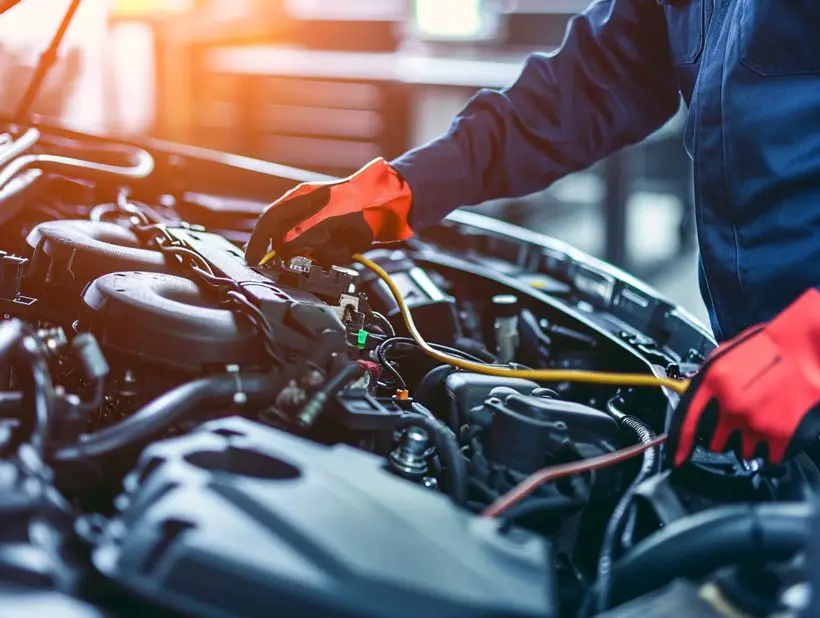
Misfires are not just an annoyance; they can cause long-term damage to your engine. It’s best to address them promptly. Here are the symptoms that might indicate your engine is misfiring:
- Sudden jolts during acceleration
- Reduced fuel efficiency
- An engine light that’s either flashing or consistently on
Diagnosing an engine misfire is a relatively straightforward process:
- Scan the vehicle’s computer system for error codes.
- Inspect the spark plugs for signs of wear or damage.
- Check the ignition coils and replace them if they’re faulty.
- Test the fuel injectors and ensure they’re not clogged.
- Conduct a compression test to check for any issues with engine compression.
Understanding the implications of an engine misfire helps us appreciate the importance of routine maintenance and addressing issues as soon as they arise. By keeping a lookout for the symptoms and acting quickly, we ensure the longevity and performance of our vehicles and a smoother idle, even when we’re just waiting at the traffic light.
2. Faulty Spark Plugs
When we notice our car shakes while stopped at a light, it’s crucial to consider the health of our spark plugs. Spark plugs are essential components that ignite the air-fuel mixture in the combustion chamber. Over time, these plugs can wear out or become fouled, leading to inconsistent performance and idle vibration.
Common signs of faulty spark plugs include:
- Engine misfiring
- Poor acceleration
- Increased fuel consumption
- Difficulty starting the engine
Spark plugs should typically be replaced every 30,000 to 50,000 miles, but this interval can vary depending on the type of spark plug and the vehicle’s make and model. It’s always best to consult our vehicle’s owner manual for the manufacturer’s recommendations.
| Spark Plug Type | Recommended Replacement Interval |
|---|---|
| Copper | 30,000 miles |
| Iridium and Platinum | 50,000 to 60,000 miles |
To assess the condition of our spark plugs, we need to remove them and inspect for any obvious signs of wear or damage. Here’s what we look for:
- Deposits or soot that may indicate an oil or fuel additive issue
- Melting or heavy erosion pointing to overheating
- Excessive gap between electrodes due to normal wear
The state of the spark plug can also give us clues about the engine’s overall condition. For instance, oil on a spark plug could suggest a more serious issue like a leaking gasket. If we are uncertain about the condition of our spark plugs or how to inspect them, it’s always wise to seek the expertise of a professional mechanic. A professional can also ensure that the spark plugs are replaced with the correct type for our vehicle, as using improper spark plugs can exacerbate idle vibration issues and even cause engine damage.
3. Worn Engine Mounts
When diving deeper into the reasons why our car may shake at a red light, we can’t overlook worn engine mounts. These critical components, also known as motor mounts, secure the engine to the vehicle’s chassis, preventing it from moving around while we drive. Over time, vibrations and road conditions stress these mounts, leading to wear and tear.
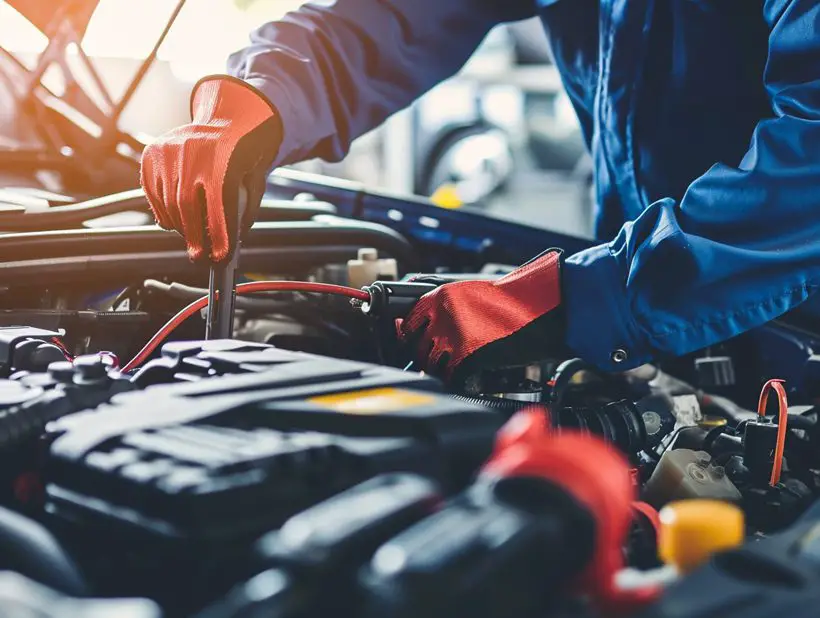
Here’s what we need to know about engine mounts and their role in minimizing idle vibrations:
- Engine mounts absorb shock: The primary function of engine mounts is to stabilize the engine and absorb the vibrations caused by the engine’s operation.
- Wear and damage: Rubber or liquid-filled mounts can deteriorate or even break, leading to an increase in felt vibrations.
- Symptoms of failing mounts: Increased engine noise and more prominent vibrations while idling are clear indicators that our engine mounts might need attention.
If we suspect that our engine mounts are worn, it’s crucial to perform a thorough examination. We’re often looking for visible cracks, sagging, or fluid leaks (if they’re the liquid-filled type). Replacing engine mounts is no small task, as it involves supporting the weight of the engine and removing the faulty mounts. Due to the complexity, it’s often best if handled by professionals.
Routine checks can go a long way in identifying engine mount issues before they worsen. Scheduled maintenance isn’t just about changing the oil; it encompasses a comprehensive inspection that should include engine mounts. This proactive approach can save us from the uncomfortable idle shakes and potential engine damage.
When engine mounts wear out, they affect not only the smoothness of our ride at a standstill but also the alignment and performance of the engine components. An unchecked engine mount issue may lead to misalignments that cause the engine to run less efficiently, impact other components, and increase our visits to the mechanic. Inspecting for, and addressing, worn engine mounts can help maintain the vehicle’s performance and prolong its lifespan.
4. Dirty Fuel Injectors
When we’re dealing with a car that shakes while stopped at a light, one common culprit could be dirty fuel injectors. These injectors are vital components in the fuel delivery system, responsible for spraying the fuel into the engine’s combustion chambers. Essentially, they ensure that the fuel mixes with air appropriately to enable efficient combustion. Over time, however, fuel injectors can become clogged with deposits, leading to several symptoms that point to a need for cleaning or replacement.
Here’s how dirty fuel injectors affect the idle vibration:
- Inconsistent Fuel Delivery: This leads to an imbalance in the air-to-fuel ratio, causing the engine to run lean (too much air) or rich (too much fuel), neither of which is ideal for smooth operation.
- Rough Idle: The disruption in fuel delivery can make the engine jittery or shaky at idle. It’s one of the most noticeable signs that our fuel injectors need attention.
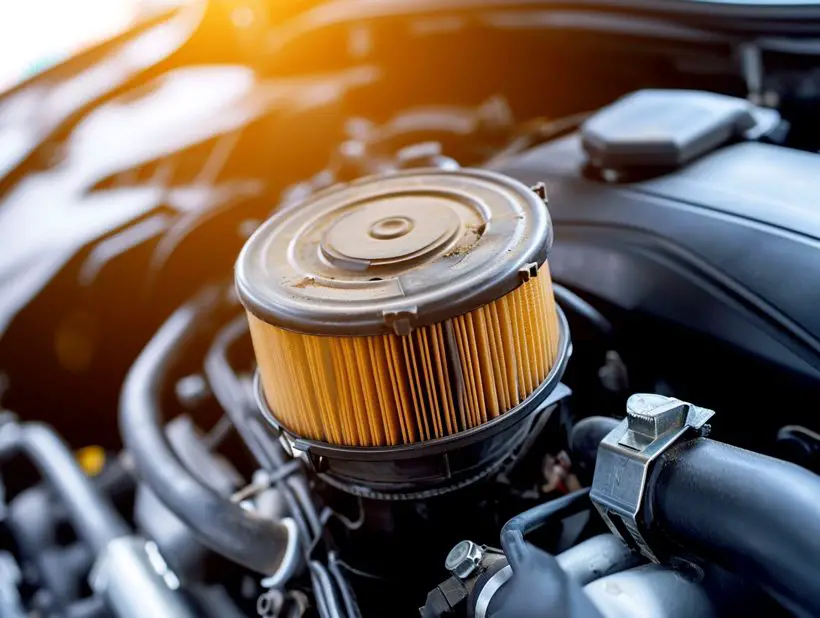
Symptoms that could indicate dirty fuel injectors include:
- Decreased gas mileage
- Engine power loss
- Engine misfires or stutters during acceleration
- Unburnt fuel smell from the exhaust
To diagnose and address dirty fuel injectors, we’d typically proceed with the following steps:
- Visual Check: Look for signs of fuel leakage or damage to the injectors.
- Pressure Test: A fuel pressure test can help assess whether the fuel injectors are delivering the correct amount of fuel.
- Engine Scan: We often use diagnostic tools to read for any trouble codes related to the fuel system’s performance.
- Professional Cleaning or Replacement: If the injectors are indeed dirty or faulty, a professional cleaning service may restore them. Otherwise, replacement might be necessary to eliminate idle vibrations.
Keeping the fuel injectors clean is crucial. Using high-quality fuel, occasionally adding fuel injector cleaners to our gas tank, and regular maintenance are effective preventive measures. Maintaining clean fuel injectors not only helps avoid idle vibrations but also ensures our car runs optimally.
5. Imbalanced or Damaged Tires
Tires are the point of contact between our vehicle and the road. When they’re imbalanced or damaged, they can lead to noticeable vibrations at idle, especially when stopped at a light. The importance of maintaining well-balanced tires for an undisturbed ride cannot be overstated.
Imbalanced tires occur when the weight is not evenly distributed around the tire’s circumference. This can cause unusual tire wear patterns, leading to vibrations that are often felt through the steering wheel or the seat. We can typically identify symptoms of tire imbalance, which include:
- Vibrations that increase with speed
- A humming noise emanating from the tires
- Uneven tire wear
Damage to tires such as bulges, bumps or heavy wear, can also contribute to shaky idling. Damaged tires don’t roll smoothly, disrupting the car’s stability and balance. Our observation of increasing vibrations while accelerating or at higher speeds can signify that it’s time to inspect our tires.
To ensure that our tires and wheels are in optimal condition, we’ll want to consider these routine checks and maintenance tips:
- Regular tire rotation every 5,000 to 8,000 miles
- Keeping tires inflated to the recommended pressure
- Balancing tires whenever new tires are fitted or when vibrations are noticed
Ensuring our tires are adequately maintained is crucial for a smooth driving experience. Similarly, alignments might be necessary if our car pulls to one side while driving or after hitting a severe pothole or curb. Professional mechanics have the expertise to assess tire condition and can offer services like rebalancing and alignment, which aid in minimizing idle vibrations and extending the life of our tires.
When it comes to preserving the health of our vehicle, we can’t afford to overlook the impact that tires have. Regular maintenance and timely interventions are key in guaranteeing that when we find ourselves at a stoplight, the only thing we notice is the red light, not the tremors under our seat.
Addressing Idle Vibration Problems
When faced with the challenge of a car shaking at a stoplight, we find that addressing idle vibration problems is imperative for both comfort and vehicle health. It’s essential to first understand that a car’s behavior at idle can serve as an indicator of its overall condition. In this section, we‚Äôll dive into the vital steps to diagnose and rectify the issue.
Diagnosing the root cause is the cornerstone of addressing any idle vibration. Here are some practical steps:
- Scan for Error Codes: Connecting to the car’s onboard diagnostic system will often reveal error codes that can point us in the right direction.
- Visual Inspection: Look for obvious signs of wear and tear on engine components and mounts that could cause excessive vibrations.
- Check the Fuel System: This includes assessing fuel injectors for cleanliness and proper function.
- Tire Inspection: Damaged or imbalanced tires are frequently culprits for vibrations, so a thorough check is essential.
After pinpointing the exact cause, the following measures can be taken:
- Replace or Repair: Worn out parts such as spark plugs, engine mounts, or tires should be replaced. This will generally reduce or eliminate vibrations.
- Fuel System Maintenance: Use fuel injector cleaner or have them professionally serviced to ensure optimal performance.
- Balance and Align Tires: If tires are the issue, balancing and alignment will significantly improve the situation.
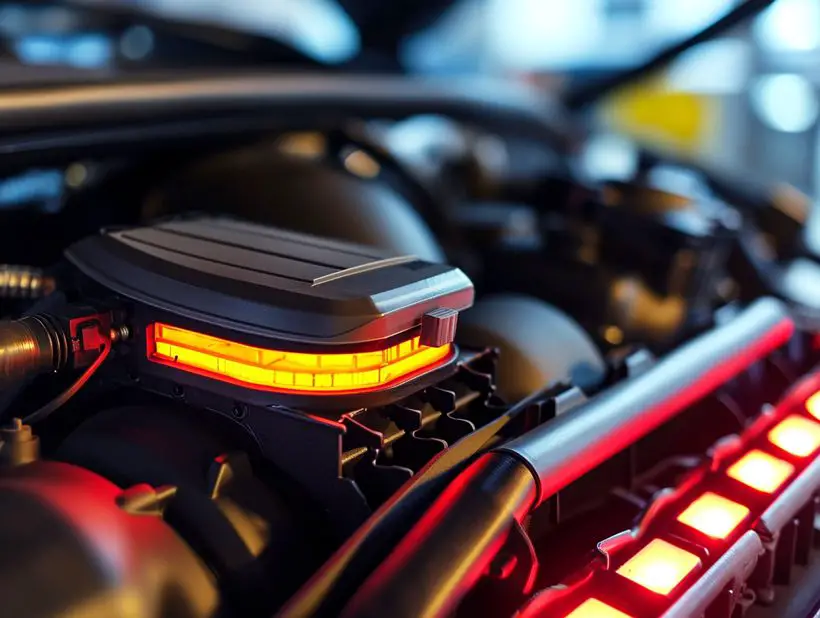
Diligent maintenance is our ally in the fight against idle vibrations. We often overlook the simple actions that can prevent these issues, such as:
- Regularly replacing spark plugs within the 30,000 to 50,000 miles range.
- Keeping up with tire rotations, inflation, and balancing schedules.
- Using quality fuel and additives to keep the fuel injectors clean.
By following these steps, we ensure a smoother ride and mitigate the risk of potential long-term damage. Remember, a shaking car at idle warrants our immediate attention. It’s not only about the discomfort but also about the longevity and safety of our vehicle.
1. Diagnose the Issue
When faced with the challenge of a car shaking when stopped at a light, the first step in problem-solving is a thorough diagnosis. Recognizing the root cause is crucial to addressing idle vibration problems effectively.
To begin our diagnosis, we should:
- Scan for Error Codes: Utilize an OBD-II scanner to retrieve any diagnostic trouble codes (DTCs) from the car’s computer. These codes can provide valuable insights into what might be causing the vibrations.
- Visual Inspection: Visually inspect the engine bay and undercarriage. Look for obvious signs of wear or damage to engine components, such as hoses, belts, and mounts that can contribute to engine vibration.
- Check the Fuel System: A clogged fuel filter or dirty fuel injectors can disrupt fuel flow and lead to uneven engine performance. Signs of these issues might include stuttering acceleration or a rough idle.
- Tire Inspection: Check your tires for uneven wear, bulges, or damage. Imbalanced or damaged tires contribute significantly to vibrations that can be felt even when the vehicle is stationary.
In most cases, these initial steps will guide us toward the problem area. Below is a table summarizing potential findings from each diagnostic method and their common related issues:
| Diagnostic Method | Potential Finding | Related Issue |
|---|---|---|
| Scan for Error Codes | DTCs for misfires or oxygen sensor issues | Engine misfires or faulty emissions systems |
| Visual Inspection | Worn belts, leaks, or cracked hoses | Engine component malfunction |
| Check the Fuel System | Poor fuel pressure or dirty injectors | Clogged or failing fuel components |
| Tire Inspection | Uneven wear or damage | Tire imbalance or damage |
After identifying the culprit behind the idle vibrations, we can take steps to resolve the issue. Perform these diagnostic methods systematically to ensure all possible causes are examined before taking corrective action. This process helps us avoid unnecessary repairs and ensures that the problem is solved efficiently and accurately.
Remember, regular vehicle maintenance can prevent many of these issues in the first place. We should never overlook the value of routine inspections and timely interventions.
2. Replace or Repair Faulty Spark Plugs
When we encounter a car that shakes when stopped at a light, one of the first areas we check is the spark plugs. Faulty spark plugs are a common culprit that can cause significant idle vibration. These components are crucial for the ignition process, and when they fail, the results can be immediately noticeable.
Assessing Spark Plug Condition
To determine if spark plugs are the issue, we’ll look for these telltale signs:
- Visual Damage: Inspect the spark plugs for any physical signs of wear or damage, such as cracks or deposits.
- Electrode Condition: Check the electrodes for erosion or excessive gap spacing.
- Discoloration: Look for any unusual colors on the plugs, which can indicate combustion issues.
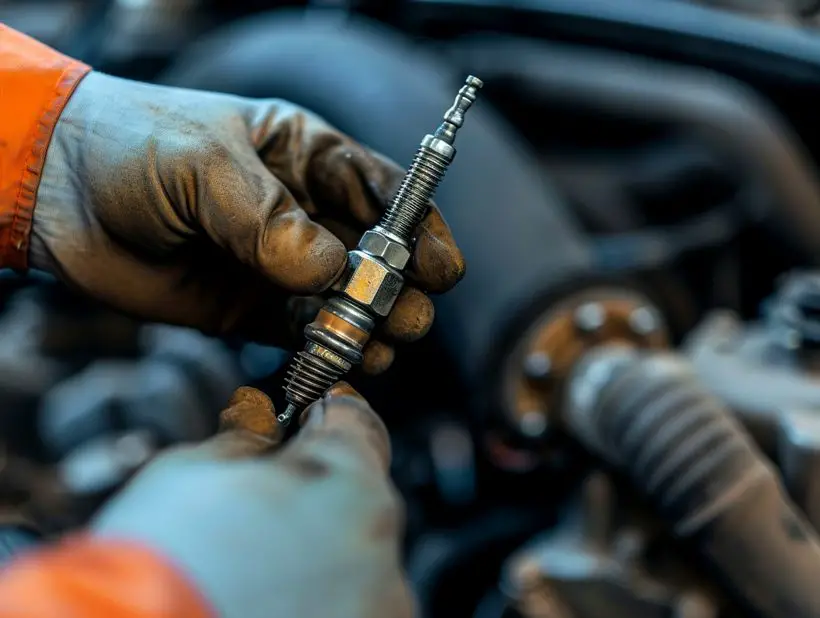
Steps for Replacement
If the spark plugs are indeed faulty, replacing them should be a priority. Here’s our process:
- Remove the spark plug wires: Gently detach the wires, ensuring not to pull from the wires themselves but the boot at the end.
- Unscrew the old spark plugs: Using a spark plug socket, we carefully remove the old plugs.
- Install the new spark plugs: We place the new spark plugs into the socket, thread them in by hand to avoid cross-threading, and then tighten to the manufacturer’s specifications.
- Reattach the spark plug wires: The wires are reconnected, making sure they are secure and properly seated.
Ensure Quality Practices
We always opt for high-quality spark plugs that match the vehicle’s specifications, as this is key for optimal engine performance. It’s advisable to consult the owner’s manual or a professional mechanic to select the appropriate type. Regular checks and replacement of spark plugs based on the manufacturer’s recommendations, which typically range from 30,000 to 50,000 miles, help prevent idle vibrations due to this cause.
By keeping an eye on the condition of our spark plugs and acting when signs of wear or damage appear, we maintain the smooth operation of our vehicle. Properly functioning spark plugs are essential not only for a jitter-free stop at traffic lights but also for ensuring our car runs efficiently and with full power on the roads.
3. Check and Replace Worn Engine Mounts
When we’re at a red light and our car begins to tremble, worn engine mounts may be the culprit. Engine mounts play a critical role in stabilizing the engine and absorbing the vibrations generated during its operation. They’re made of rubber and metal and over time, these materials can degrade due to stress and environmental factors.
Let’s break down the key steps to diagnosing and replacing worn engine mounts:
- Inspection: Our first step should be a thorough examination. We look for visible signs of wear, such as cracks or sagging in the rubber components, or any other physical damage that suggests the mounts aren’t supporting the engine correctly.
- Assessment: By starting the engine and observing how it sits, we can often determine if the issue is mount-related. An engine that moves excessively or makes a clunking noise upon startup or shutdown likely has mount issues.
- Replacement: If we’ve pinpointed the mounts as the problem, replacing them is our next move. This involves supporting the engine, removing the old mounts, and securing the new ones in place. It’s a task that involves precision and safety considerations, so we recommend having an experienced mechanic take the lead.
Properly functioning engine mounts are vital for a smooth ride. While they aren’t always the first suspect, ignoring signs of wear can lead to a host of cascading vehicle issues.
Here’s a simple table to keep in mind when considering the health of our engine mounts:
| Sign of Wear | Possible Consequence |
|---|---|
| Cracks in Rubber | Increased Engine Vibration |
| Sagging Mounts | Misalignment of Engine Parts |
| Metal Corrosion | Reduced Shock Absorption |
Routine inspections and replacing mounts as needed can save us from more significant repairs down the line. Keeping our engine securely anchored not only prolongs its life but also enhances our driving experience by keeping those unsettling shakes at bay.
4. Clean or Replace Dirty Fuel Injectors
Dirty fuel injectors are often an overlooked culprit when troubleshooting a car that shakes at idle. Fuel injectors play a critical role in supplying the engine with precise amounts of fuel. When they’re dirty or clogged, the flow of fuel is disrupted, contributing to erratic engine idling and potential vibration.
To maintain optimal engine performance, it’s crucial to either clean or replace dirty fuel injectors. Here’s what we should pay attention to:
- Symptoms of unclean fuel injectors:
- Reduced fuel economy
- Engine misfires
- Rough idling
- Difficulty starting the car
Regular maintenance includes checking the state of the fuel injectors. Over time, debris and deposits can accumulate, necessitating a cleanup. Fuel injector cleaning can be done in several ways:
- Using fuel injector cleaning additives, which you add to the fuel tank. These additives can help dissolve minor deposits during normal engine operation.
- Professional fuel system cleaning services that use specialized equipment to cleanse the fuel system more thoroughly, including the injectors.
There are instances, however, when cleaning might not suffice. If the fuel injectors are severely clogged or damaged, replacing them could be the only viable solution. Below is a simplified overview of the signs that might necessitate replacing the fuel injectors:
| Sign | Likely Interpretation |
|---|---|
| Inconsistent idling | Potential fuel injector malfunction |
| Poor acceleration | Possible severe clogging or damage |
| Excessive emissions | Injector replacement might be due |
| Failure to start | Significant injector problems |
It’s advised to have a licensed mechanic perform a diagnostic test to accurately assess the condition of the fuel injectors. They’ll use professional diagnostic tools to determine whether cleaning or a complete replacement is required. Keeping fuel injectors in good condition ensures that our car runs smoothly, efficiently, and vibration-free, especially when idling at a stoplight.
5. Balance or Replace Imbalanced or Damaged Tires
When it comes to vehicle vibrations at a stoplight, we can’t overlook the importance of well-balanced tires. Tires that are imbalanced or damaged can cause a car to shake, even when it’s not in motion. We’ll delve into how to identify if your tires are the culprit and what steps you should take to remedy the situation.
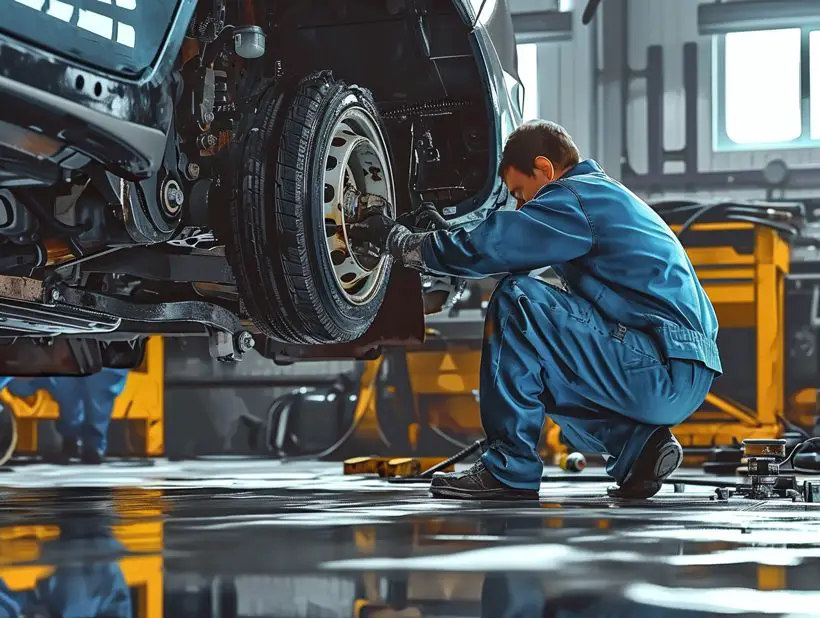
Tire imbalances occur when the weight of the tire isn’t distributed evenly around the wheel. This can lead to a wobbly effect that translates into vibrations felt inside the cabin. We can usually feel these vibrations intensify with speed, but they can also persist when we’re stopped.
Here’s what to look out for:
- Unusual tire wear patterns
- Steering wheel wobble at certain speeds
- Bouncing or rumbling sensations while driving
- Visual signs of tire damage, such as bulges or blisters
If you’ve noticed any of these symptoms, it’s time to have your tires checked. Our first step is typically a tire balancing service. This process involves attaching small weights to the wheel to ensure even weight distribution.
However, if tires are damaged or excessively worn, mere balancing won’t cut it. Damaged tires can be a hazard, not just a nuisance. They compromise your car’s handling and can lead to a blowout if not addressed. When we recognize these issues, replacing the tires is the only safe solution.
We can use the following outline for proper tire maintenance:
- Regular tire inspections for damage and wear
- Getting tires balanced with every tire rotation, typically every 5,000 to 7,500 miles
- Replacing tires when tread depth falls below 2/32 inch, as per tire tread rules
Maintaining tire health is critical for minimizing idle vibrations and safeguarding our overall driving experience. Regular checks and professional assessments are key to ensuring our tires contribute to a smooth, secure ride. By proactively monitoring and addressing tire health, we’re not just troubleshooting vibration issues but also protecting our safety on the road.
Conclusion
We’ve taken a deep dive into the causes of car shakes when stopped at a light and the steps you can take to address idle vibration problems. Remember, routine maintenance and prompt attention to symptoms like engine misfires, faulty spark plugs, worn engine mounts, dirty fuel injectors, and tire imbalances can make all the difference. By staying on top of these issues, we can ensure our vehicles run smoothly and last longer. Trust your instincts‚ something feels off, it’s worth getting it checked out. Safe and vibration-free driving starts with taking care of our cars, and we’re here to help you every step of the way.
